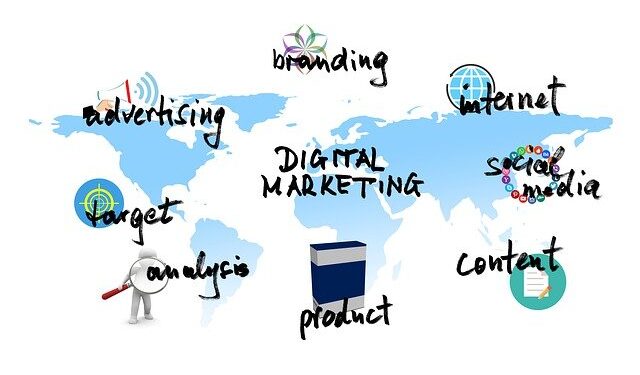There are many parts to a digital marketing company plan. Each of these sections should be streamlined to communicate its key features to stakeholders and managers. In this way, you can keep the big picture in mind while aligning details with the overall goal. Typically, this section includes a list of goals that are broken down into subcategories. This makes it easy to see exactly what your goals are and how you can achieve them.
Getting the results you want from digital marketing
When it comes to digital marketing, most people are in a hurry to get results. They try to manipulate search algorithms or automate content to see quick results. While these methods may work for a short period of time, they will only produce temporary results. Real results will take time and patience. Real results mean conversions, revenue, and customers. It will take time to build a successful digital marketing strategy and see results.
The first thing you need to do is define your goals. For example, if your goal is to increase brand awareness, you may want to pay more attention to social media. However, if you want to increase sales, you might want to focus more on SEO and content optimization, as well as PPC campaigns. Once you’ve identified your goals, you can focus your efforts on the right areas. You’ll also want to understand how your digital marketing efforts affect your sales.
Fine-tuning your plan
One way to improve your marketing efforts is to fine-tune your strategy. First, you should consider your primary product. A stellar product can earn repeat sales and build a strong reputation for your company. Secondly, you can optimize the sales process and improve your customer service. Lastly, you should adjust your pricing and payment terms as your customers’ priorities change over time. These are just a few of the ways you can fine-tune your digital marketing plan to improve your bottom line.
To start, use name generator sites to find company names that are unique and trending. These sites allow you to input keywords and filters that match your target market and will provide you with a list of trending names. This step can save you time and effort, which you can spend on trying new approaches and monitoring competitors. Once you have a few company names in mind, you can move on to studying your competitors’ online and digital media methods. This can be a time-consuming process, so you might want to consider using a comparative analysis tool to save yourself the trouble.
Calculating a budget
When calculating a budget for a digital marketing plan, you should first know how much money your company has to spend. You can then divide that money into different categories and use the totals to figure out how much to spend on each. In some cases, you may want to use a fixed budget for one campaign while others may need a flexible budget to cover several marketing campaigns. Regardless of your budget, it’s important to determine which type of marketing is best for your business.
A simple digital marketing budget strategy is to use the 70-20-10 rule. This rule states that 70 percent of your budget should be used for proven marketing strategies. Twenty percent should go to things you can’t see yet. The remaining ten percent should be used to implement new and innovative strategies that will separate your business from competitors. It’s important to be realistic when setting a budget. Keeping in mind your goals and revenue expectations, you can create an effective digital marketing plan to achieve them.
Another helpful tip is to look at the competition. You can find out how much money they’re spending on digital marketing by looking at the size of their budgets. Usually, small businesses allocate seven to twelve percent of their total revenue. The total revenue is the sales you make before paying for any expenses. However, if your competition is a large company, you’ll need to spend more than that to compete.
For example, an organization with two million dollars in revenue should invest two hundred thousand dollars on marketing. A company with $20 million would spend twenty million dollars. This difference makes sense, considering that the cost of advertising is much higher. Smaller businesses would need to spend much more to compete with larger companies. However, this is still a reasonable amount to set aside for marketing. If you don’t want to spend more than you can afford, make sure you hire an agency that offers a marketing team with the experience and expertise necessary to get results.
When calculating a budget for a digital marketing plan, keep in mind your objectives and the identity of your organization. Moreover, consider your current economic situation, as well as your future goals. You may want to increase your budget for a certain type of marketing activity, such as social media. Then, you can multiply the results by a percentage to get a good idea of how much to allocate for each activity.
Targeting your audience
Targeting your audience is an essential part of creating an effective digital marketing plan. It is important to understand the demographics of your target audience. This includes factors such as age, gender, educational level, and ethnic background. By understanding these details, you can tailor your message and approach to these consumers. You may find that there is no single group that will be interested in your products and services, so be sure to identify your target audience and cater your marketing to this group.
Understanding your audience can be difficult. To learn more about your target market, start by researching what they look for and how they feel. Using customer surveys or social media engagement can help you determine the needs of your audience. Using this information can help you create content that speaks to their lifestyle, priorities, and attitudes. The next step in your marketing plan is to determine how to gather and manage data. To do so, you’ll need to identify your audience’s behavior patterns.
Once you’ve established your target audience, start creating your digital marketing plan. You should use social media channels to reach them, including Facebook and Twitter. You can also use content to connect with them on a personal level. For example, you could create content for different stages of the buyers’ journey. In addition, you can create ads that target a specific audience. And since your audience changes constantly, you need to plan your advertising accordingly.
You must define your audience early and create a specific plan. Your target audience is a group of people who are likely to be interested in your products or services. You must know their demographics, interests, and lifecycles. Knowing your audience will also help you increase your customer lifetime value and improve your conversion rate. By knowing your audience better, you’ll be able to develop a relationship of trust and loyalty with them as an.
5 Digital Marketing Plan Benefits
The advantages of a digital marketing plan are numerous. It streamlines marketing efforts and helps you maximize your ROI. Cost effectiveness is another benefit. This strategy helps you match your product with the correct customers. Product matching is a method that matches specific codes with current product information. It also helps you generate leads for your business. You can even automate your digital marketing plan with the help of specialized software. Let’s look at some of these features:
Cost-effectiveness
When determining how much to spend on your digital marketing campaign, the first step is to determine your objectives. Obviously, you can’t evaluate a social media campaign as cost-effective if you only care about clicks. However, if you set a goal to increase website traffic and conversions, it will be easier to calculate the cost-effectiveness of social media campaigns. Whether you’re advertising on Facebook, Twitter, or other social networks, you need to determine your costs and timelines so that you can create a digital marketing plan that best meets your needs.
For example, a cost-effective digital marketing plan can start with a low trial budget. After a few months, you can scale it up as your business grows. You can also try using the services of a digital marketing agency to maximize your budget. While it may seem like an investment at first, these marketing solutions can help your business gain visibility and increase sales by 109%. In addition, a cost-effective digital marketing plan will allow you to control your budget, enabling you to monitor the success of your marketing strategy as you grow.
Lead generation
The benefits of lead generation are numerous. It helps you reach out to a wide audience, capture the interest of qualified leads, and turn them into sales. This practice also helps you discover more opportunities and improve your ROI. So, if you’re looking to expand your reach and improve your ROI, add lead generation to your digital marketing plan. It’s simple and effective. Read on to find out more. Listed below are 5 advantages of lead generation to your digital marketing plan.
It takes time to collect leads but if we hire an pro digital marketing agency it will be easy. Your goal is to offer valuable content that consumers will want to read, download, or share. To do that, you need to create free content. There are several ways you can do that. For instance, you can create an eBook or a checklist that offers valuable information for your prospects. Another option is to create a webinar or educational eBook. You can also create a newsletter. Whatever you choose, make sure that it blends in with the design of your site to attract leads.








